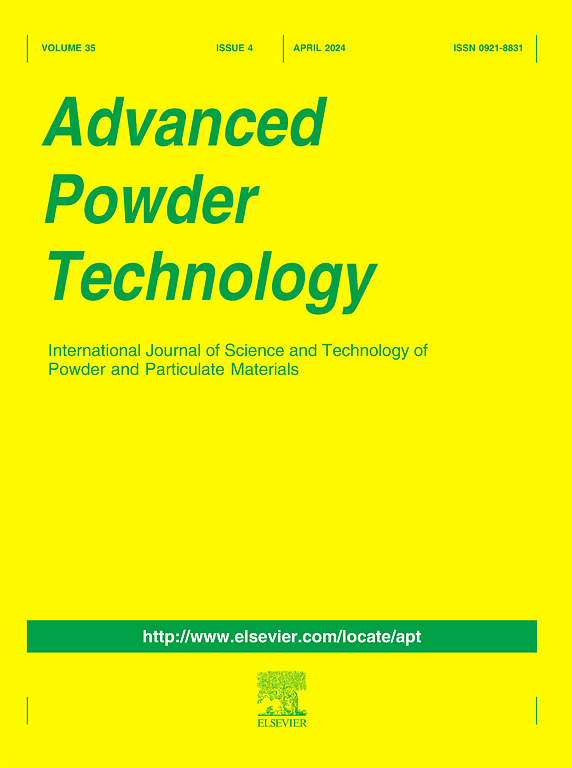Effects of external nitrogen sources on the electrochemical properties of nitrogen-doped carbon materials from bio-oil distillation residue
IF 4.2
2区 工程技术
Q2 ENGINEERING, CHEMICAL
引用次数: 0
Abstract
Bio-oil distillation residue is a potential material for the production of activated carbon (AC) owing to the high carbon content and low ash content. The exogenous nitrogen sources have significant effects on the characteristics of nitrogen-doped AC. However, the relationship between nitrogen sources and the performances of nitrogen-doped AC remains ambiguous. In this study, four representative nitrogen sources, piperazine, urea, melamine, and polyaniline, are carefully selected to investigate their effects on the physicochemical and electrochemical properties of nitrogen-doped AC. The results show that the introduction of nitrogen sources increases the nitrogen contents of ACs, with the doping capacity ranked from the highest to the lowest as follows: polyaniline (5.42 wt%), piperazine (1.43 wt%), urea (1.28 wt%), melamine (0.92 wt%). Furthermore, compared to the specific surface area (SSA) of the AC without nitrogen-doping (1454.20 m2/g), the introduction of piperazine, urea, and melamine leads to increases in SSA, measuring 1552.69 m2/g, 1832.56 m2/g, and 1928.11 m2/g, respectively. However, the introduction of polyaniline decreases the SSA to 795.60 m2/g. The nitrogen-doped AC prepared by melamine shows excellent electrochemical properties, whose specific capacitance reaches 350F/g in 1 mol/L H2SO4 three-electrode system with a current density of 1 A/g.

外部氮源对生物油蒸馏渣氮掺杂碳材料电化学性能的影响
生物油蒸馏渣具有含碳量高、灰分低的特点,是生产活性炭的潜在原料。外源氮源对氮掺杂AC的特性有显著影响,但氮源与氮掺杂AC性能之间的关系尚不明确。本研究选取了哌嗪、尿素、三聚氰胺和聚苯胺四种具有代表性的氮源,研究了它们对氮掺杂AC的物理化学和电化学性能的影响。结果表明,氮源的引入使AC的氮含量增加,掺杂容量从高到低依次为:聚苯胺(5.42 wt%)、哌嗪(1.43 wt%)、尿素(1.28 wt%)、三聚氰胺(0.92 wt%)。此外,与未掺杂氮的AC的比表面积(SSA) (1454.20 m2/g)相比,哌嗪、尿素和三聚氰胺的引入导致SSA的增加,分别为1552.69 m2/g、1832.56 m2/g和1928.11 m2/g。然而,聚苯胺的引入使SSA降低到795.60 m2/g。三聚氰胺制备的氮掺杂交流电具有优异的电化学性能,在1 mol/L H2SO4三电极体系中,电流密度为1 a /g,比电容达到350F/g。
本文章由计算机程序翻译,如有差异,请以英文原文为准。
求助全文
约1分钟内获得全文
求助全文
来源期刊

Advanced Powder Technology
工程技术-工程:化工
CiteScore
9.50
自引率
7.70%
发文量
424
审稿时长
55 days
期刊介绍:
The aim of Advanced Powder Technology is to meet the demand for an international journal that integrates all aspects of science and technology research on powder and particulate materials. The journal fulfills this purpose by publishing original research papers, rapid communications, reviews, and translated articles by prominent researchers worldwide.
The editorial work of Advanced Powder Technology, which was founded as the International Journal of the Society of Powder Technology, Japan, is now shared by distinguished board members, who operate in a unique framework designed to respond to the increasing global demand for articles on not only powder and particles, but also on various materials produced from them.
Advanced Powder Technology covers various areas, but a discussion of powder and particles is required in articles. Topics include: Production of powder and particulate materials in gases and liquids(nanoparticles, fine ceramics, pharmaceuticals, novel functional materials, etc.); Aerosol and colloidal processing; Powder and particle characterization; Dynamics and phenomena; Calculation and simulation (CFD, DEM, Monte Carlo method, population balance, etc.); Measurement and control of powder processes; Particle modification; Comminution; Powder handling and operations (storage, transport, granulation, separation, fluidization, etc.)
 求助内容:
求助内容: 应助结果提醒方式:
应助结果提醒方式:


